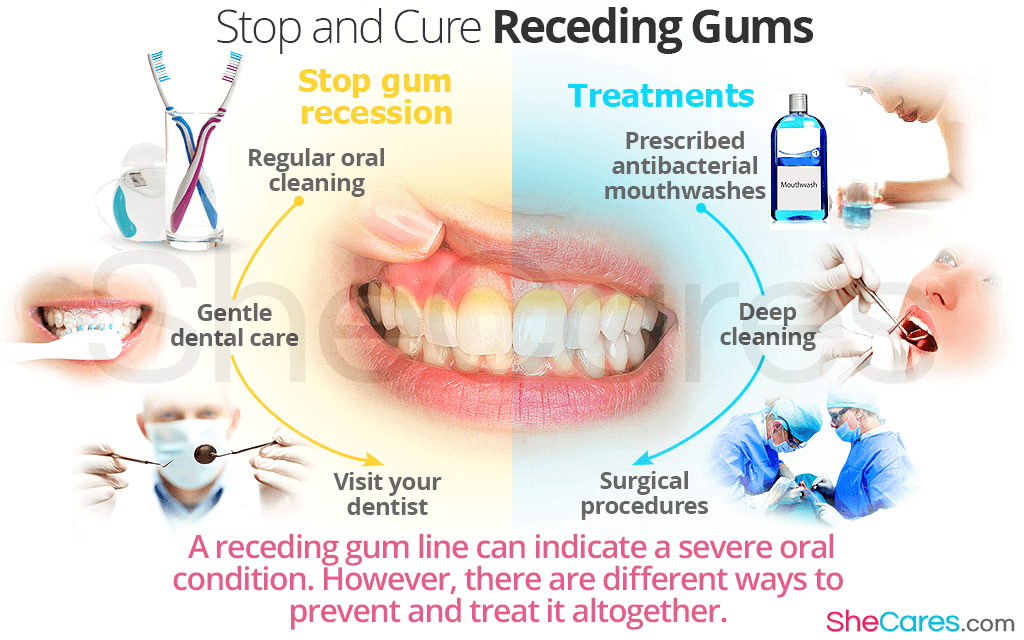Receding gums often become apparent some time after their development has begun. It can be a gradual condition that may not be noticeable until other problems manifest, such as increased tooth sensitivity. Rest assured, however, the effects of a receding gum line can be greatly improved, if not undone altogether. Read on to find out more about some prevention techniques and different treatment methods.
How to Stop Gum Recession
Knowledge of proper gum and general dental care can help you to combat receding gums if they do begin to appear, or indeed prevent them altogether. Important actions to stop receding gums include:
- A regular and thorough oral cleaning regimen. Dentists recommend that you brush your teeth twice daily, and floss at least once a day. It is important to thoroughly clean all surfaces of the teeth in order to remove plaque, which contains bacteria. Good oral hygiene will decrease the chances of contracting gum disease, and therefore receding gums.
- Personal dental care should be gentle. While it is important to administer extensive cleaning, it is worth noting that brushing and flossing should not be conducted to vigorously. Rough use of cleaning implements is likely to cause damage to gums, which can increase the chance of bacteria infiltrating the tissue, leading to infection. It is advised that a soft-bristled brush be used, and you take your time when cleaning.
- Frequent visits to the dentist. Depending on your personal condition, your dentist might recommend you to schedule just one or several appointments per year. Averagely, it is advisable to attend check-ups every year.
Treatments for Receding Gums
Once gum recession has been noticed, ideally action should be take straight away. When acted upon early, the chances of undoing the problem are far greater. The most effective treatment methods are:
- Prescribed antibacterial mouthwashes and antibiotics. The dentist may prescribe certain mouthwashes and gels to reduce the bacteria and the bacteria-filled pockets. Also, antibiotics may be prescribed to fight the inflammation.
- Scaling and root planning at the dentist. If your condition warrants it, your dentist can perform a deep cleaning, which will often entail two processes known as scaling and root planing. These can involve the use of a manual instrument and an ultrasonic tool that uses vibrations to remove plaque.
- Surgical procedures. In some cases, if cleaning is not sufficient enough to improve the gum recession, it is possible to undergo surgery to enhance gum tissue. Soft tissue grafts can be positioned to the affected area, and will soon become integrated and grow successfully to the previous gum line.
It is possible to become somewhat overwhelmed when searching for a cure for receding gums, but the most relevant thing to consider is the importance of dental hygiene for preserving gum and tooth health. If you can maintain good cleanliness, then you are much more likely to avoid gum recession or alleviate it quickly.
